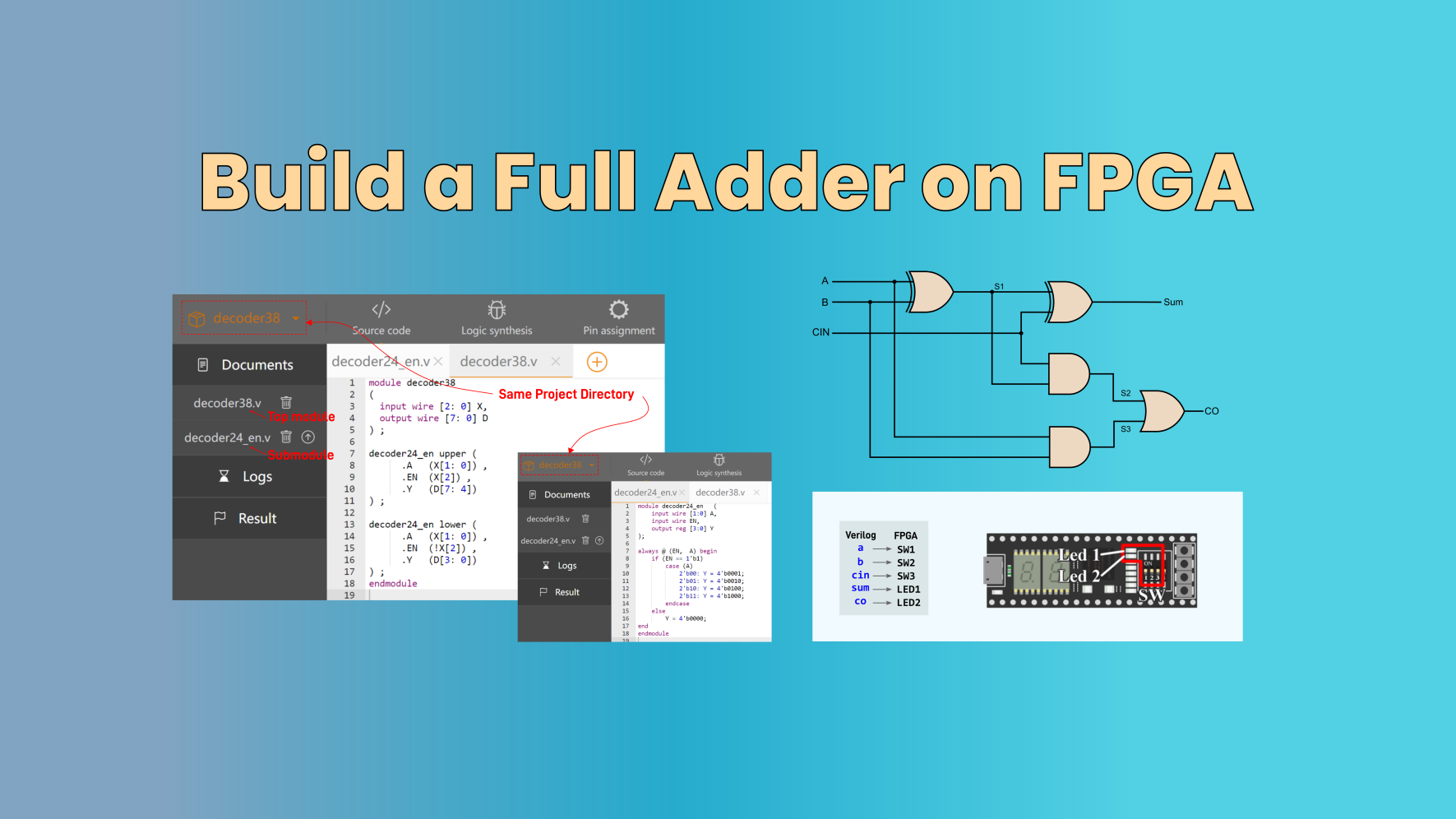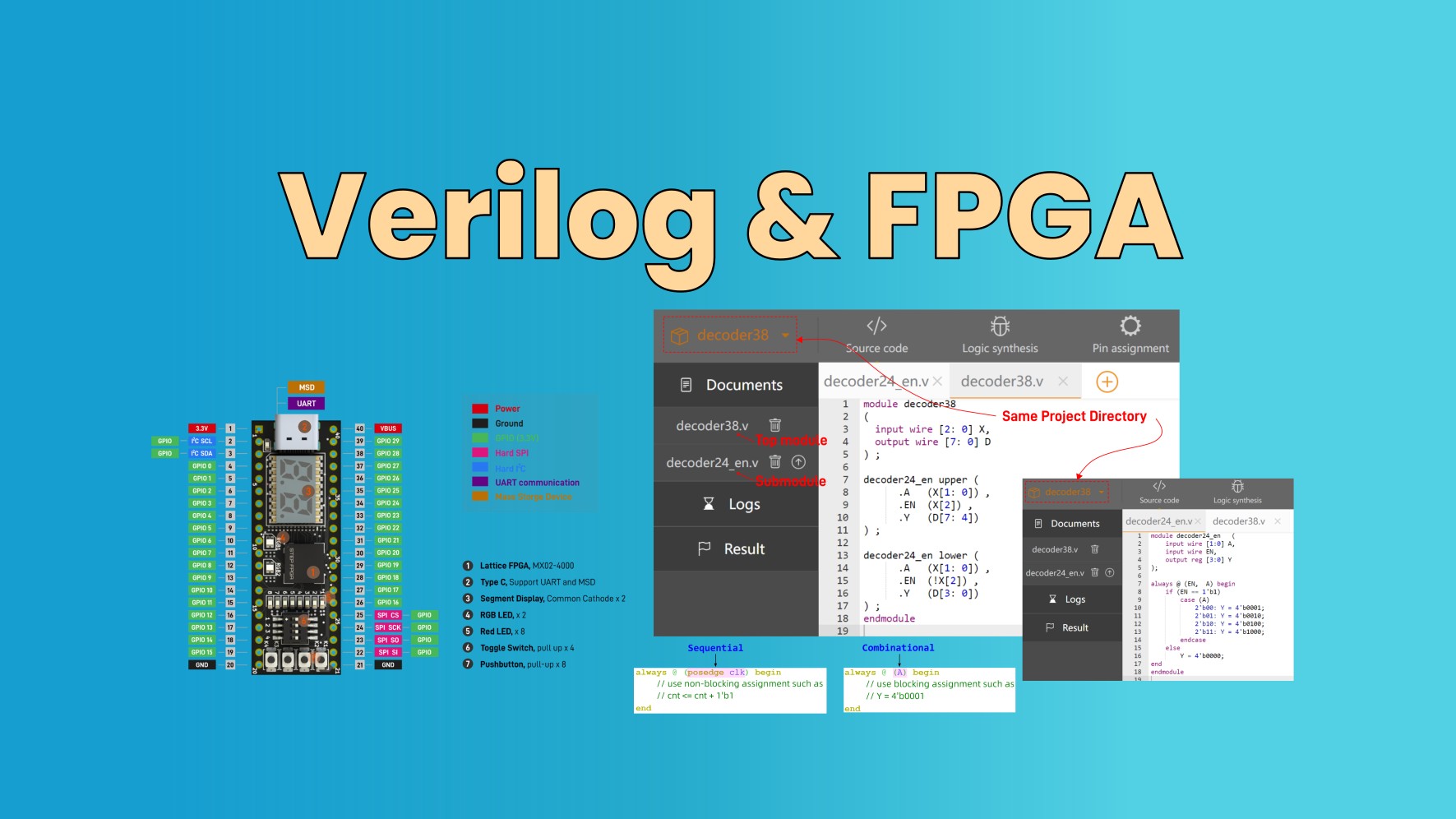What is a Binary Encoder?
In simple words, Binary Encoder used to encode a Binary Codes. An Encoder converts data from many bits to fewer bits. For binary Encoders, a piece of information containing 2N input signals can be encoded with only N output signals. The naming of the Encoder usually follows the convention of 2N-N
4-to-2 Binary Encoder:
Let us try to understand the name 4-to-2 Binary Encoder with the help of its equation of determination > 2N-N Binary Encoder
If an Encoder has “n” number of output lines then the number of input lines will be 2N
Number of input lines > 2N = 22 = 4
N is the number of output > 2
Hence, 4-2 Encoder!
Below is the 4-2 binary encoder block diagram, circuit diagram and equations.


For a simple 4-2 binary Encoder, its Truth Table is given in Table 1.15.
Application of Binary Encoders:
- Decimal to Binary Conversion: Encoders are commonly used to convert decimal values into binary format.
- Priority Encoders for Interrupt Detection: Priority encoders are particularly useful in microprocessor applications for detecting interrupts. In systems with multiple interrupt sources, a priority encoder identifies the highest-priority interrupt and sends a corresponding signal to the microprocessor, enabling efficient handling of interrupts.
- Address Decoder: Encoders are employed in memory and I/O systems for address decoding. They help select specific memory locations or input/output ports based on the address provided by the microprocessor or controller, supporting data transfer and communication between different components of the system.
- Data Multiplexing and Demultiplexing: Encoders play a crucial role in data multiplexing and demultiplexing applications. They combine multiple input signals into a single output signal (multiplexing) or split a single input signal into multiple output signals (demultiplexing), enabling efficient data transmission and communication in digital systems.
- Sensor and Actuator Interface: Encoders are used to interface with various sensors and actuators in embedded systems and automation applications. They convert analog sensor readings or control signals into digital format, allowing for precise measurement, monitoring, and control of physical parameters in real-time.
- Position and Motion Sensing: Rotary encoders are widely used in robotics, CNC machines, and motion control systems for accurately measuring position, velocity, and direction of rotation. They provide feedback to control systems, enabling precise movement and positioning of mechanical components.
- Security Systems: Encoders are employed in security systems such as access control systems, keyless entry systems, and biometric authentication systems. They encode and decode digital signals to verify user credentials, control access to secure areas, and enhance overall security measures.
- Communication Systems: Encoders are utilized in communication systems for encoding and decoding data transmitted over communication channels. They help ensure the integrity and reliability of transmitted information, enabling error detection and correction in digital communication protocols.
Advantages of Using Encoders in Digital Logic
- Reduction in the number of lines (data): Encoders reduce the number of lines required to transmit information from multiple inputs to a single output, which reduces the overall cost, simplifies the design, and processing time.
- Better reliability: By converting multiple inputs into a single serial code, encoders can reduce the possibility of errors in the transmission of information.
-
Increase in performance: Encoders improves the performance of the digital system by reducing the amount of time required to transmit information from multiple inputs to a single output or less outputs.
Read our blog on the difference between digital data byte vs bit https://www.eimtechnology.com/blogs/articles/byte-vs-bit-the-relationship-between-a-byte-and-a-bit
Next we would be discussing the Priority Encoders. To know about our future blog updates subscribe us.

